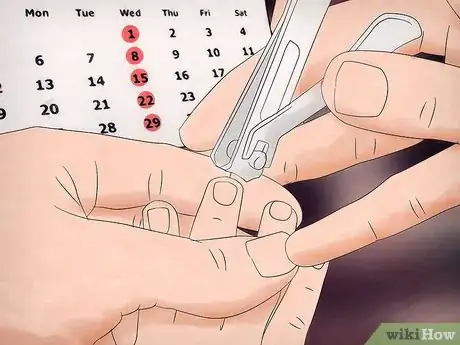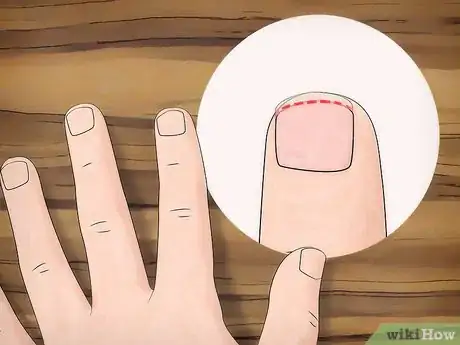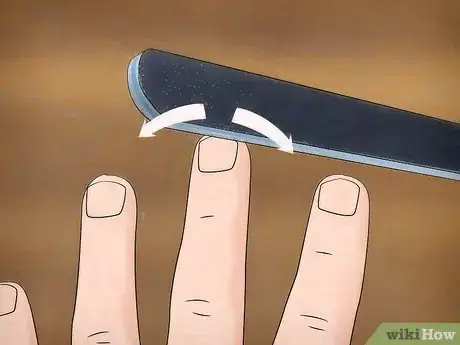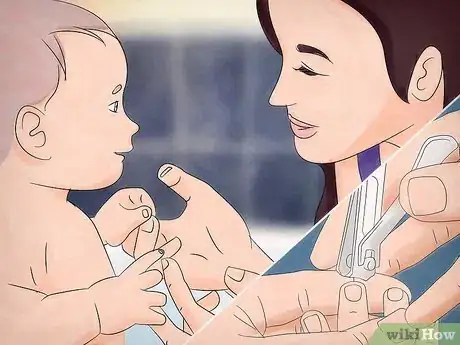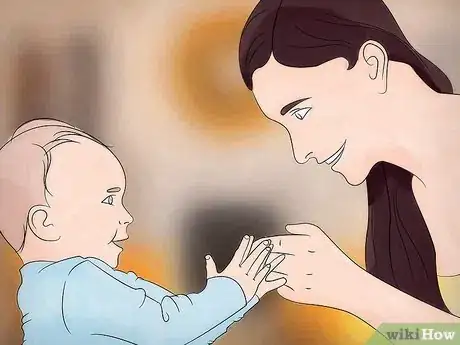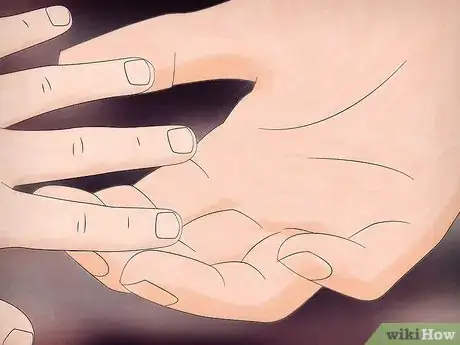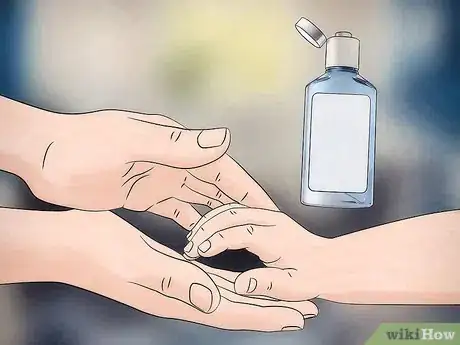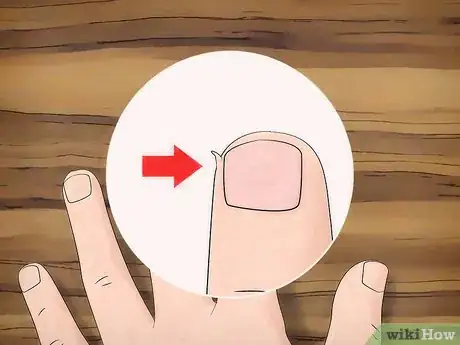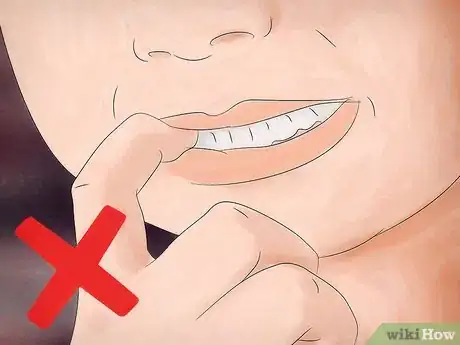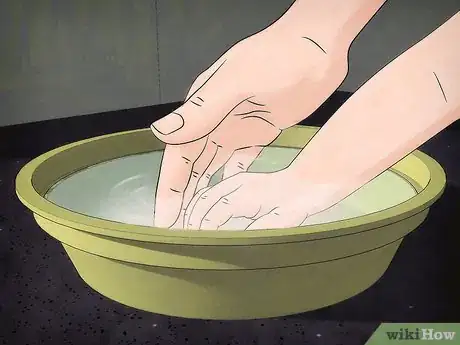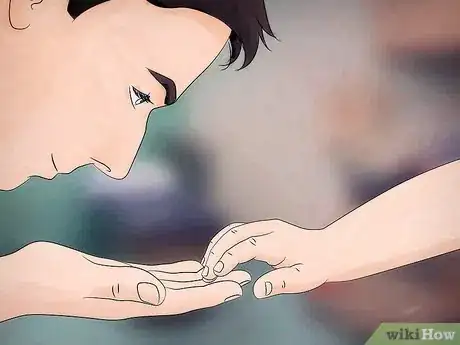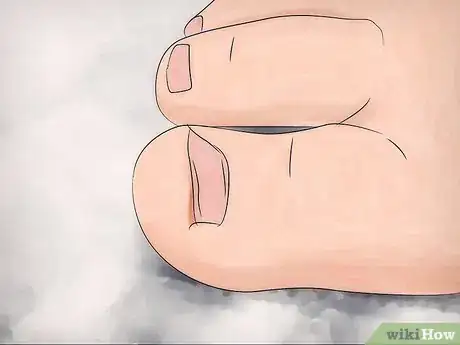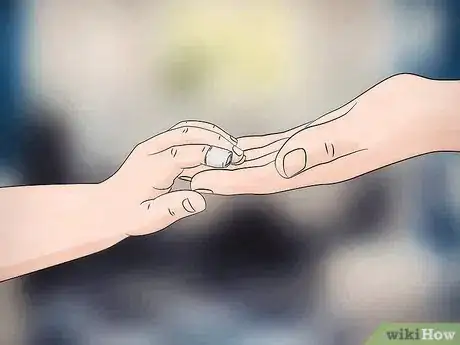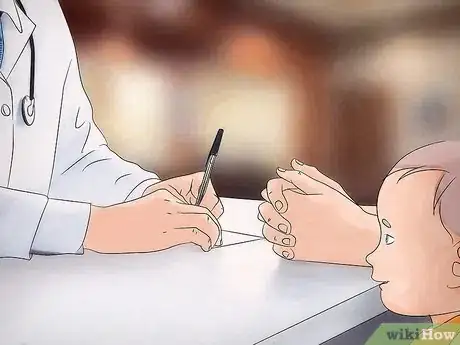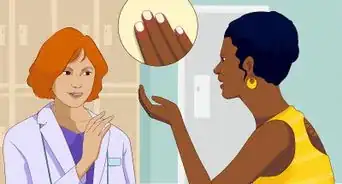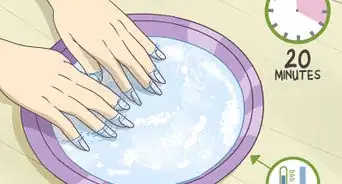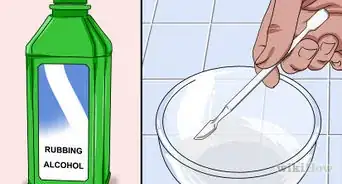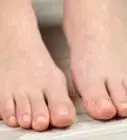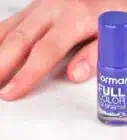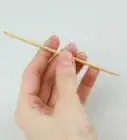This article was co-authored by Andrea Rudominer, MD, MPH. Dr. Andrea Rudominer is a board certified Pediatrician and Integrative Medicine Doctor based in the San Francisco Bay Area. Dr. Rudominer has over 15 years of medical care experience and specializes in preventive health care, obesity, adolescent care, ADHD, and culturally competent care. Dr. Rudominer received her MD from the University of California, Davis, and completed a residency at the Lucile Packard Children's Hospital at Stanford University. Dr. Rudominer also has an MPH in Maternal Child Health from the University of California, Berkeley. She is a Member of the American Board of Pediatrics, a Fellow of the American Academy of Pediatrics, a Member and Delegate of the California Medical Association, and a Member of the Santa Clara County Medical Association.
There are 12 references cited in this article, which can be found at the bottom of the page.
This article has been viewed 19,384 times.
Good nail care is important for healthy toddlers. Dermatologists recommend that parents trim children’s nails for them until they reach 9 to 10 years of age, and keeping nails clipped can prevent injuries and infection.[1] Caring for your toddler’s nails is not just about clipping frequently and properly, though – you should also model nail care for your child from a young age as well as know how to handle infections and other nail injuries.
Steps
Trimming Finger and Toe Nails
-
1Cut finger nails about once a week. Finger nails grow at a rate of about .1 millimeters each day. That doesn’t sound like much, but it means that your toddler’s nails can grow enough in a couple of weeks to inadvertently scratch herself or others. You may get a reminder in the form of a small cut, if you fall behind.[2]
- Smaller children may need more frequent trims. Infants, for instance, have very fast growing nails that can need to be clipped twice a week.[3]
- Toenails grow a bit more slowly than fingernails, on the other hand. You probably only need to cut them once or twice per month.
-
2Cut the nails straight across. Using nail scissors or clippers, cut nearly straight across and round a little at both edges of the nail. Do this for both the finger nails and toe nails. It will reduce the chance that your toddler develops a hangnail, which can cause infections.[4]
- Do not cut below the skin level, as that can make your child more prone to getting ingrown nails.[5]
- For infants and smaller children, you can use blunt-nose toe nail scissors or baby nail clippers. You can even find baby nail clippers with lights so you can clip their nails while they're sleeping or at night.[6]
- Do not use adult nail clippers. Be very careful so that you don’t accidentally cut the tips of the toes or fingers, as well.[7]
- Do not trim a child’s finger or toe nails by biting them. This can transmit a condition called herpetic whitlow, an infection of the finger or thumb caused by the herpes virus.[8]
Advertisement -
3Smooth any rough edges with a nail file. Once you’ve trimmed the nails, look for any ragged edges that could scratch or catch onto something like fabric. Use a nail file or emery board to smooth off these rough patches.[9]
- Always make sure to pull the emery board in the same direction when filing nails. Going back and forth can weaken nails.
- If you don't want to cut your toddler's nails, you can even use the nail file to help keep them from growing too long.[10]
- Leave your toddler’s cuticles alone. Cuticles protect the nail root, so you don’t need to cut them back or push them down.
-
4Trim after a bath or shower. Warm water from the bath will temporarily soften your toddler’s nails. Try to trim immediately after one so that the procedure is easier and less daunting for you both. As a bonus, the water can also relax your child.[11]
- Some children just don’t like nail cutting and throw fits at the first sight of clippers. Try clipping the nails when your child is asleep, if you have this sort of problem.
-
5Make it a game. Toddlers are often uncooperative. You might find that nail clipping time elicits squirms, tantrums, or refusals. One way that you can make nail trimming easier – on you as well as on your toddler – is to turn it into a game. Having a bit of fun can make your child forget all about being antsy or scared.[12]
- You might inject a little fun by singing a finger nail-themed song, like “The Itsy Bitsy Spider Went to the Nail Salon.”
- You could also pretend with your toddler that her fingers are a big family and that the nails are their hair. Explain that every week, the mommy, daddy, and kids need to go for a trim.
- Be mindful of language, too. Toddlers may be uncooperative because you’re using the word “cut,” which they associate with pain. Opt for a more neutral word like “trim” or “clip” instead.
-
6Trim a few fingers and try again later. Don’t feel that you absolutely need to trim every finger and toe nail in the same sitting. There’s no fast rule. For really a resistant toddler, try to do what you can before she gets too squirmy or escapes.[13]
- Get a few nails clipped and then try again later. You might even wait until the next day to complete all ten fingers.
Modeling Good Nail Care
-
1Check your nails often. Teach your child to check her nails from time to time to make sure that they’re healthy, forming a good habit. Nails can show signs of certain kinds of health problems, like if they have dark streaks on them or become brittle. Both of these are signs that you should see a dermatologist.[14]
- Start this with your toddler from a young age. Check her nails while explaining what you’re doing, i.e. “Daddy’s just looking at your finger nails to make sure they’re healthy. Sometimes, if something’s wrong, the nails try to tell you.”
- You can teach children more about what to look for in healthy and unhealthy nails as they get older, like thickened or discolored nails or deformations in the shape of the nail.
-
2Dry and moisturize. Teach your toddler how to properly care for nails once they’ve been trimmed, as well. This includes making sure that the hands and feet remain dry, which can reduce the risk of infection, and also that the nails and cuticles are kept moisturized.[15]
- Apply some lotion to your toddler’s nails after a bath or shower, particularly when the air is dry. This can prevent nails from splitting and cuticles from cracking.
- As before, explain what you’re doing, i.e. “Now we’ll just put a little bit of lotion on each nail. This keeps the nails healthy so they won’t crack.”
-
3Get rid of hangnails properly, right away. A hangnail is small, torn piece of skin at the edge of a nail. They are common but can hurt and, if removed incorrectly, can lead to an infection of the nail or the surrounding skin. Check your toddler’s fingers and toes for hangnails and remove them safely.[16]
- Always wash your hands and your toddler’s hands with soap and water before trying to get rid of a hangnail, to reduce the chance of infection.
- Never bite or rip off a hangnail. Instead, cut away the extra skin with a small pair of scissors or a clean nail clipper. Apply some antibiotic ointment to the area afterward.
- Talk to your toddler through this procedure, especially if she is anxious. Reassure her that cutting the hangnail won’t hurt and that it needs to come off, i.e. “Don’t worry sweetie. We just have to take this little tiny piece off – it won’t hurt at all.”
-
4Don’t pick or chew your nails. There are a lot of bad habits that can damage finger and toenails. Picking at the cuticle, biting and chewing, or frequently sucking on a finger or thumb can cause infections or deform the nails. Try to model good habits by not doing any of these things while also teaching your toddler to avoid them.
- Biting or picking at the cuticle can lead to deformation, especially when the nail root is affected. These nails will grow in ridged or wavy. [17]
- Damaged skin around the nail from biting or sucking can expose your toddler to an infection, called paronychia. This occurs when bacteria enter into the body and can cause swelling, tenderness, and the accumulation of pus.
Handling Infections and Avulsions
-
1Soak an infected nail in warm salt water. Your toddler might have paronychia if you notice redness, swelling, or the formation of an abscess around one of her nails. This is a bacterial infection. It’s usually not serious, but observe it closely so that it heals it good time.[18]
- Infections in and around the nails will most often heal on their own. However, you can soak the infected finger in warm salt water a few times per day. This will promote healing.
- Use warm water, not hot water. Test the water before using it on your toddler.
-
2See a doctor if the infection spreads or if there is an abscess. Keep a close eye on nail infections and take your toddler to see a doctor if you notice the infection start to spread. Also be aware of small pus-filled blisters that form in the center of the infection. These are abscesses and may need to be drained.[19]
- A doctor can treat an infection with antibiotics and, possibly, by draining pus from the finger. Don’t try to treat or lance abscesses by yourself, as this can cause complications and worsen the infection.
-
3See a doctor for avulsed nails. An avulsion is when a finger or toe nail gets partially or totally separated from its normal position, usually from injury. A child might accidentally snag a toe nail on carpeting or slam a finger nail in a car door, for example. This sort of situation may need emergency medical care, especially if there’s damage to the nail bed.[20]
- Take your toddler to a doctor or to a medical center for care. She may need to get stitches or the doctor may need to remove the nail, put it back in place, or repair the nail bed.[21]
- Stay on top of follow-up care and make sure that you bring your child to all appointments. Be ready to call the doctor again if she is having problems.
-
4Keep the injured area raised, is possible. A finger with an avulsed nail may be sore for a few days after the injury. It may take several days for the wound to completely heal and longer for a nail to grow back – 6 months for a finger nail and maybe 12 to 18 months for a toe nail. Treating the wound well at home will help to speed up this healing process.[22]
- At home, try to keep the injured area elevated on a pillow whenever the child lies down for the next three days. This will reduce swelling.
-
5Follow your doctor’s orders. Your doctor will likely have instructions for how you should handle any bandages and pain relievers after an avulsion. Follow these as closely as you can and always give medicines exactly as directed.[23]
- Leave the child’s bandage on and, if she got stitches, don’t let the area get wet. Cover the affected hand or foot with a plastic bag when she bathes.
- In general, you should remove the bandage and gently clean the wound two times per day after the first 24 to 48 hours. You can apply a thin layer of Vaseline or petroleum jelly to the wound and cover with a non-stick bandage. Replace as necessary.
- Follow your doctor’s order for medication. Do not give your child two or more pain medications at once unless the doctor has explicitly directed it. Never give anyone under age 20 aspirin, either, as it has been linked to a serious inflammation of the liver and brain, or Rye’s syndrome, in children and adolescents.
References
- ↑ https://www.aad.org/public/skin-hair-nails/nail-care/child-nail-care
- ↑ https://www.healthychildren.org/English/ages-stages/baby/bathing-skin-care/Pages/Nails-Nails-Everywhere.aspx
- ↑ https://www.healthychildren.org/English/ages-stages/baby/bathing-skin-care/Pages/Nail-Care-Fingers-and-Toes.aspx
- ↑ https://www.aad.org/public/skin-hair-nails/nail-care/child-nail-care
- ↑ Andrea Rudominer, MD, MPH. Board Certified Pediatrician & Integrative Medicine Doctor. Expert Interview. 6 May 2020.
- ↑ Andrea Rudominer, MD, MPH. Board Certified Pediatrician & Integrative Medicine Doctor. Expert Interview. 6 May 2020.
- ↑ https://www.nlm.nih.gov/medlineplus/ency/article/001914.htm
- ↑ https://www.healthychildren.org/English/ages-stages/baby/bathing-skin-care/Pages/Nail-Care-Fingers-and-Toes.aspx
- ↑ https://www.aad.org/public/skin-hair-nails/nail-care/child-nail-care
- ↑ Andrea Rudominer, MD, MPH. Board Certified Pediatrician & Integrative Medicine Doctor. Expert Interview. 6 May 2020.
- ↑ https://www.aad.org/public/skin-hair-nails/nail-care/child-nail-care
- ↑ http://www.whattoexpect.com/toddler/grooming/taking-care-of-toddler-nails.aspx
- ↑ http://www.whattoexpect.com/toddler/grooming/taking-care-of-toddler-nails.aspx
- ↑ https://www.aad.org/public/skin-hair-nails/nail-care/child-nail-care
- ↑ https://www.aad.org/public/skin-hair-nails/nail-care/child-nail-care
- ↑ https://www.aad.org/public/kids/nails/hangnails
- ↑ http://kidshealth.org/en/kids/your-nails.html#
- ↑ https://www.merckmanuals.com/professional/dermatologic-disorders/nail-disorders/acute-paronychia
- ↑ http://kidshealth.org/en/parents/paronychia.html#
- ↑ http://www.fairview.org/healthlibrary/Article/116315EN
- ↑ https://myhealth.alberta.ca/Health/aftercareinformation/pages/conditions.aspx?hwid=bo1469
- ↑ https://myhealth.alberta.ca/Health/aftercareinformation/pages/conditions.aspx?hwid=bo1469
- ↑ https://myhealth.alberta.ca/Health/aftercareinformation/pages/conditions.aspx?hwid=bo1469
